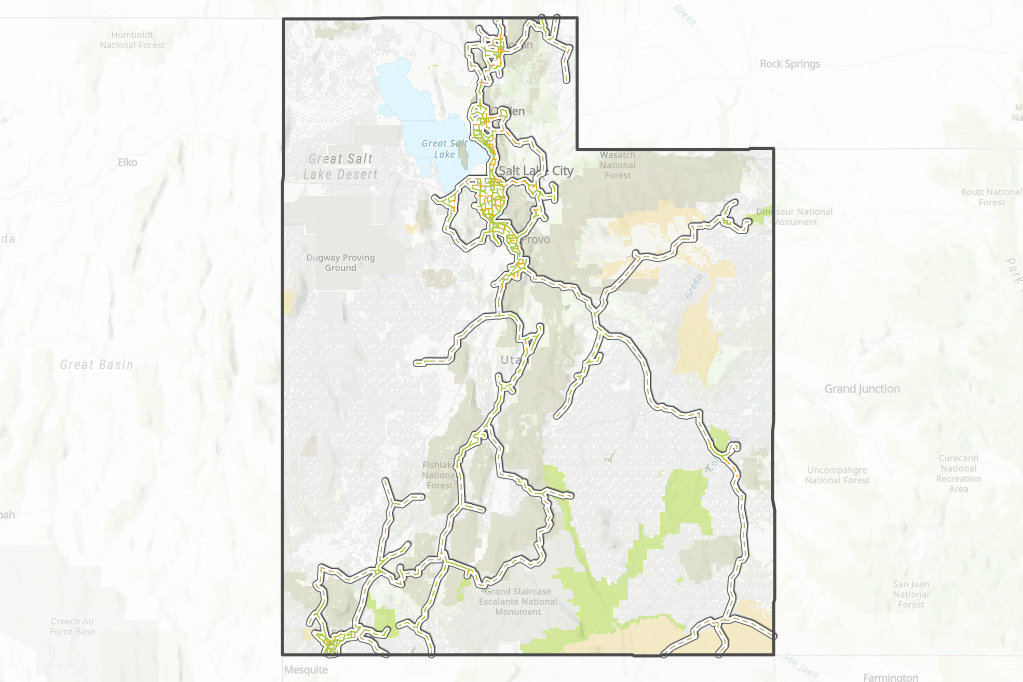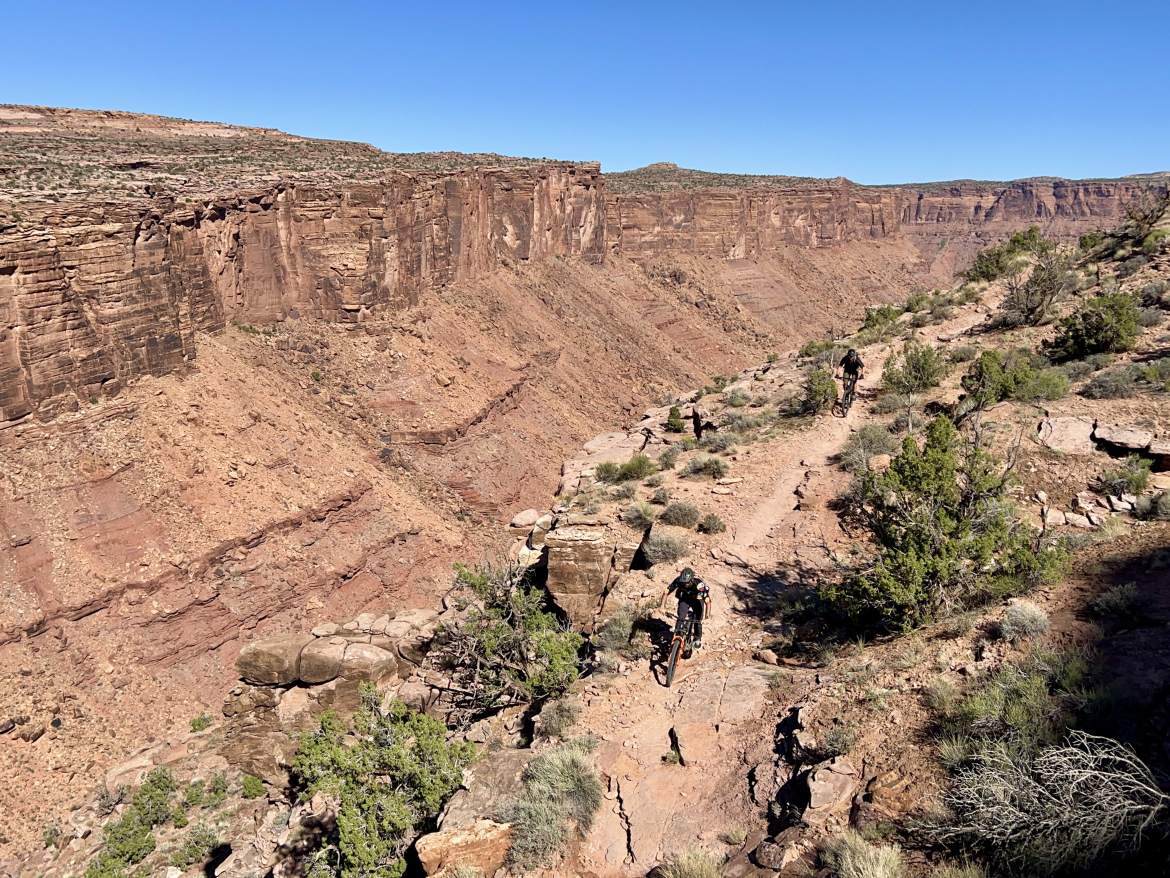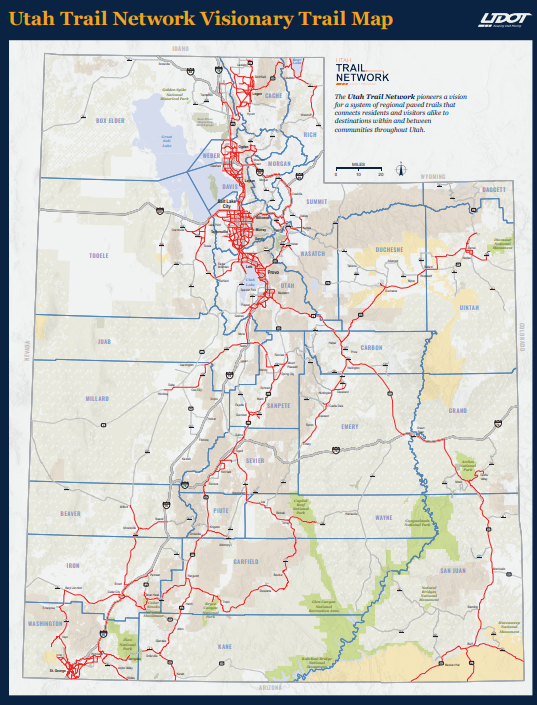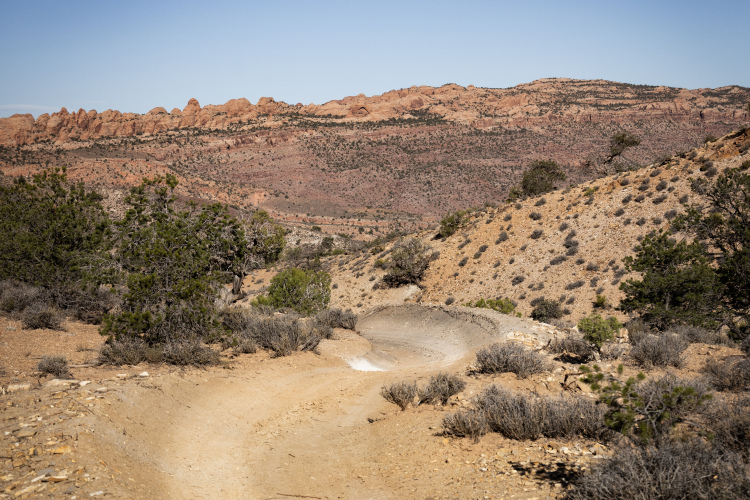
Cycling connectivity in Utah will take a massive leap forward with what officials are calling an “interstate system” for bicycles. Governor Spencer Cox and the Utah Department of Transportation unveiled plans last week for the “Utah Trail Network,” a 3,100-mile spider web of protected, paved bike paths spanning the entire state of Utah. Of the 3,100 miles, 500 currently exist, and Cox proposes building 2,600 more miles of paved bike path.
The trail system has been in the works since legislation passed in 2023, allocating up to 5% of revenues from six different taxes to the project, not to exceed $45 million per year. In effect, the project has been funded to the tune of $45 million per year indefinitely.

Pedal to your favorite Utah MTB destination
An interactive map shows the massive network of existing and proposed paved trails. The Wasatch Front and the Salt Lake Valley show a massive web of interconnected paths. In addition, bike paths head deeper into the mountains, connecting to iconic mountain bike destinations like Park City. The proposed network ventures north and east into the Cache Valley, running through the mountain canyon above Logan, where all the best trails are located, before connecting to Bear Lake.
Heading south and east, the trails will run through Price and connect to Moab, heading as far southeast as the Four Corners region. In the northeast, the trail system connects to the town of Vernal, home to lesser-known desert riding.
In the southwest, the cycling interstate system reaches the major hub of of St. George, while connecting to other well-known MTB destinations like Hurricane and Cedar City. St. George is the second-densest network of paved paths on the map, providing access to the many trail systems lacing the rugged hills above the city.
If you want to pedal to one of Utah’s Mighty Five national parks, you bet you can get there on these bike paths, too. Capitol Reef, one of the parks that’s furthest from a major town, even has a bike path bisecting it.
Four different levels of trail development
The interactive map shows four different levels of trail development, or “project type.” The first, “base network existing,” is the current existing trails that primarily connect urban areas. The second, “base network proposed,” is an expansion of this urban connectivity.
Next, “gap closure proposed” is a section that is a critical gap that needs to be closed, but these sections need to be studied more carefully than the proposed additions to the base network.
Finally, the longest stretches of bike path spanning between cities and crossing vast stretches of mountains and desert are labeled “vision corridor proposed.” These sections, while the most inspiring, are the furthest from potential construction and will require serious environmental and engineering reviews and planning. These final two labels, while marked on the map, could potentially be moved based on on-the-ground findings.
The importance of car-free connectivity
“We need to spend more time outside, more time connecting with people, and more time exercising, and the way we do that is through our trail system,” said Cox in a news release. “The Utah Trail Network helps every Utahn commute, recreate, and enjoy Utah. It’s a great way to build for future generations.”
Officials say the planned trail system will come within one mile of 95% of Utahns. While perhaps you won’t pedal your bike hundreds of miles to Moab for your next big getaway… well, at least you know you could. Instead, this will likely have the biggest impact for mountain bikers living in urban areas by creating safer car-free routes to pedal to the trails.
“The goal is to connect the entire state of Utah with a network of paved trails. The goal is to help people have transportation options so they can choose to walk, bike, or scoot to their destinations without having to get in a car,” Stephanie Tomlin, Trails Division director at UDOT, told ABC4.












3 Comments
Nov 4, 2025
Nov 7, 2025
3 weeks ago